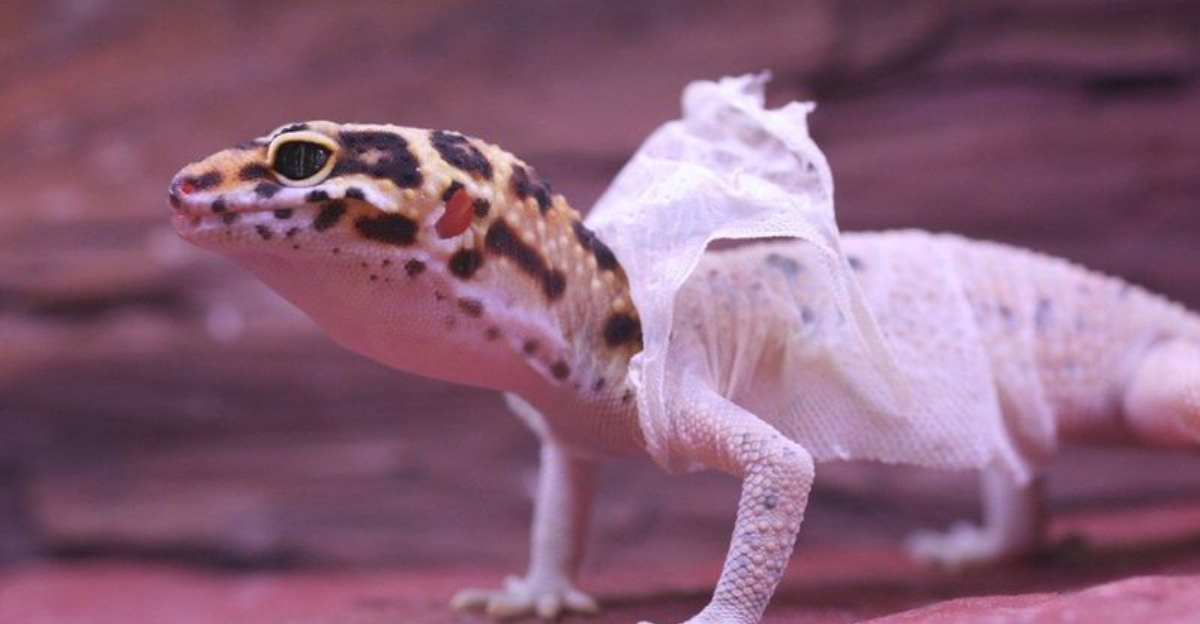Shedding skin is a fascinating survival mechanism that many animals have developed to grow, heal, and adapt to their environments.
From the slithering snakes to the elusive arthropods, skin shedding is a natural process that supports their life cycles.
Today, we’ll explore these unique animals, each with its own captivating method of shedding skin. So, dive in to discover how these creatures rejuvenate, protect, and sustain themselves through this incredible process.
1. King Cobra
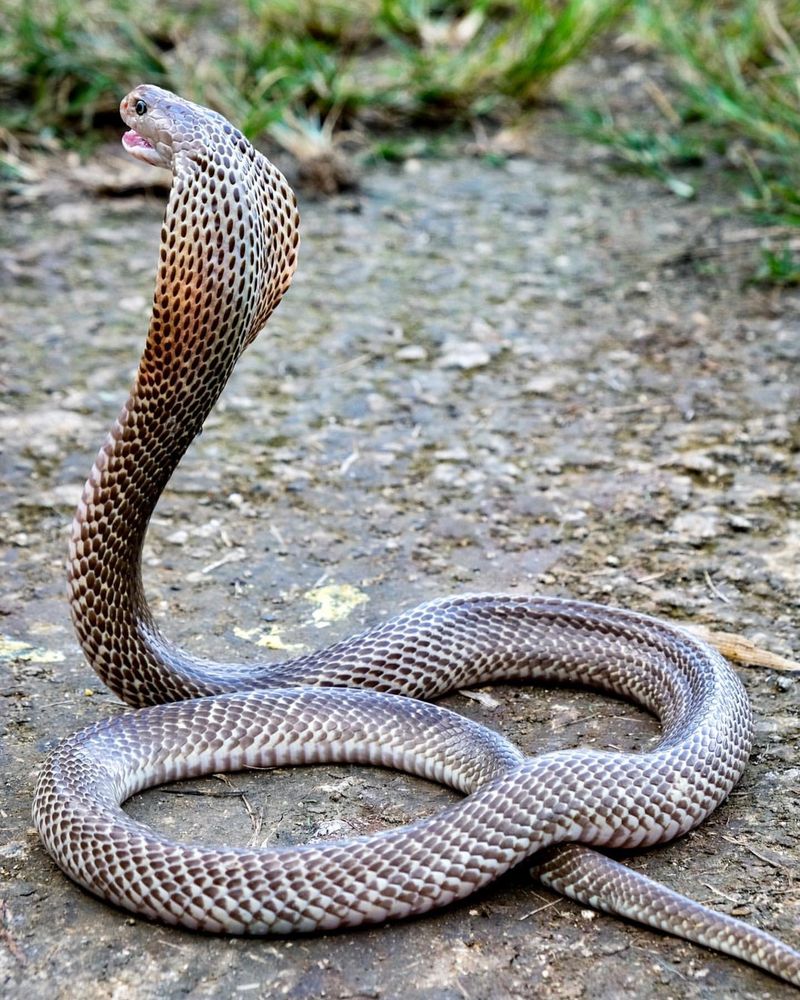
The King Cobra, known for its regal presence and menacing hood, is a master of the art of skin shedding. This remarkable snake undergoes ecdysis, the process of shedding its old skin, multiple times a year.
Shedding allows the King Cobra to grow, as its skin does not stretch. Instead, it outgrows its old layer, revealing a fresh, vibrant one underneath.
In the wild, this process usually begins with the snake rubbing its nose against a rough surface to start peeling away the old skin. As it slowly slithers forward, the skin turns inside out, akin to removing a sock.
This transformation not only aids in growth but also removes parasites that may have settled on the old skin.
Post-shedding, the King Cobra’s appearance is immaculate, with its scales glistening under the sun. This fresh layer is essential for its survival, aiding in camouflage and protection.
2. Green Iguana
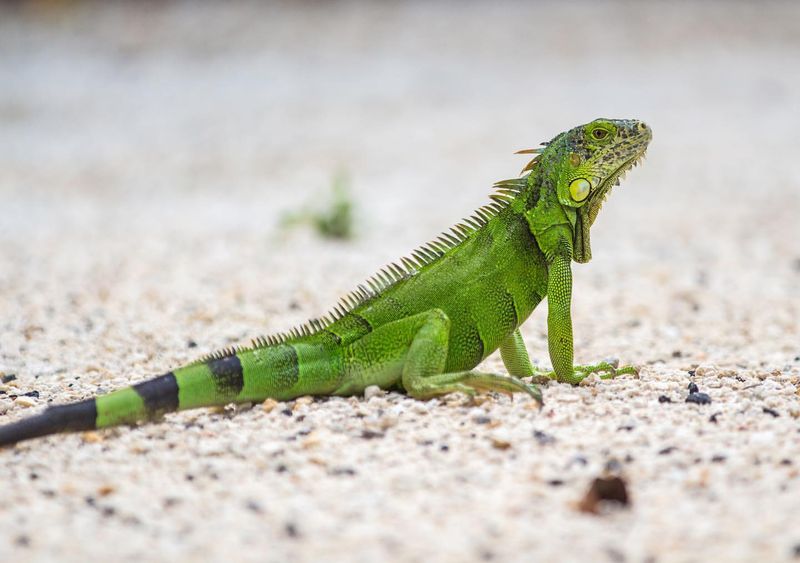
A striking reptile often seen basking in sunlight, the Green Iguana, goes through a notable skin-shedding process known as molting. This process is not just about growth but also about maintaining healthy skin.
Unlike snakes, iguanas shed their skin in patches rather than a single piece. During the shedding period, which can happen several times a year, the iguana’s old skin peels away to reveal a fresh, vibrant layer beneath.
This peeling is facilitated by the iguana rubbing itself against rough surfaces like rocks or branches, assisting in the removal of the old, worn-out skin.
Shedding is crucial as it helps the iguana remove parasites and dead skin, ensuring its health. The new skin layer not only enhances its vivid coloration but also provides better protection. This cyclical process is a clear demonstration of how iguanas, and reptiles in general, are adapted to their environments.
3. Tarantula
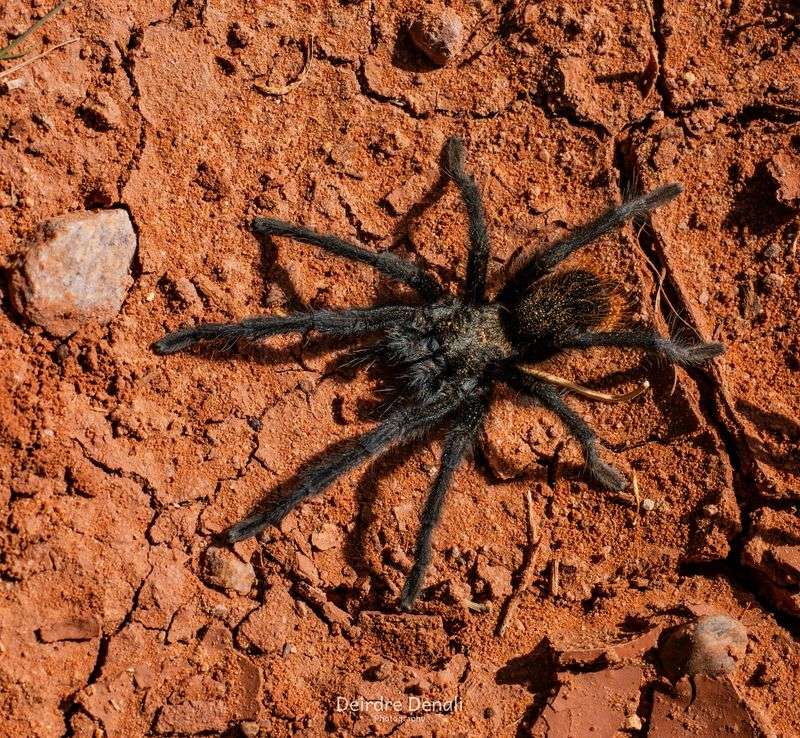
Tarantulas, the large and often misunderstood arachnids, have a unique way of shedding their skin called molting. Unlike reptiles, tarantulas shed their entire exoskeleton, a process that allows them to grow and renew vital body structures.
This molting is not just about size increase; it’s a complete transformation. Before molting, tarantulas stop eating and become lethargic. They lay on their backs, a position that might alarm unknowing observers, but is perfectly normal.
The exoskeleton then splits, and the tarantula slowly wiggles out, leaving a perfect replica behind. The new exoskeleton is initially soft, making the freshly molted tarantula vulnerable. It takes several days to harden fully, during which the tarantula is defenseless.
This period is critical, providing the spider with a renewed set of fangs, claws, and even new sensory hairs. Molting is essential for their survival, enabling tarantulas to continue their predatory lifestyle with renewed vigor and agility.
4. American Alligator
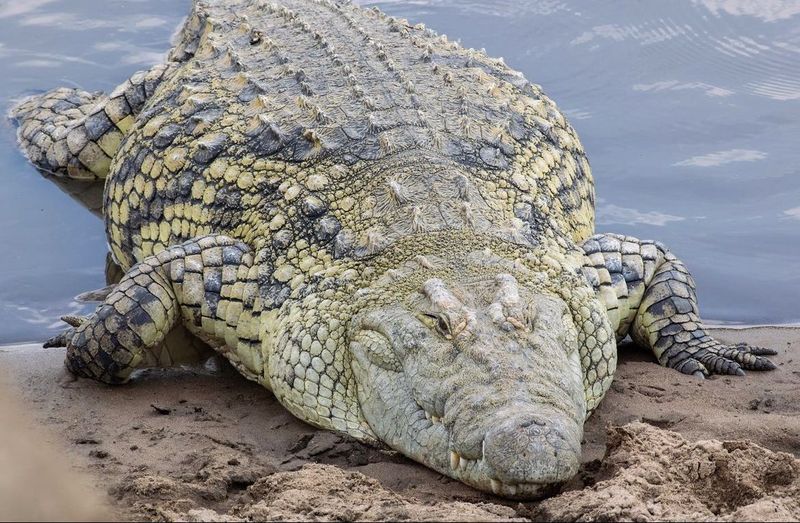
A formidable predator of the swamps, the American Alligator, undergoes skin shedding much like its reptilian cousins. This process, though gradual, helps the alligator maintain healthy skin and remove parasites.
Unlike snakes, their skin sheds in pieces rather than a whole. The shedding process is not often visible, as it happens in small sections over time. Alligators rub against rough surfaces or engage in water movements to aid this shedding process.
This ensures that the new skin beneath is clean and ready to protect against environmental challenges. Shedding allows the alligator to adapt to seasonal changes, growing slightly larger each time.
It’s a subtle yet vital process that contributes to the alligator’s survival, keeping its skin thick and resilient against the harsh elements of its habitat.
5. Cicada
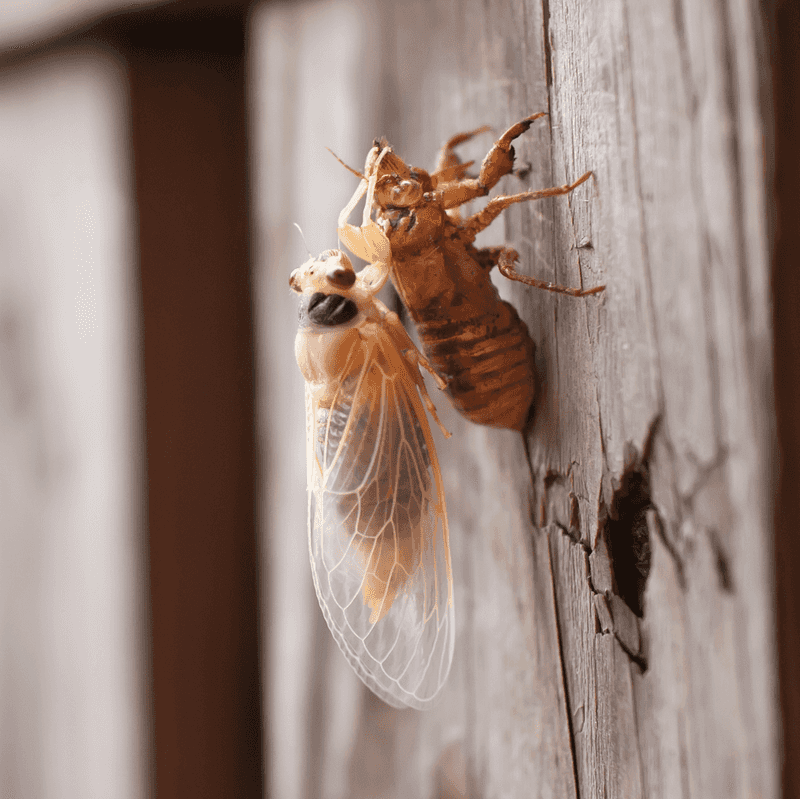
The Cicada, famous for its unmistakable summer song, is another fascinating creature that sheds its skin. This phenomenon occurs during their transition from nymph to adult, a dramatic metamorphosis that often captivates onlookers.
Emerging from the ground after years of subterranean life, the nymph climbs a tree or other vertical surface. Once secure, it begins the molting process. The exoskeleton splits along the back, and the cicada pulls itself free, leaving the empty shell clinging to the bark.
Once emerged, the cicada’s delicate wings are inflated with fluid, expanding and hardening in preparation for flight.
This transformation is both rapid and mesmerizing, marking the beginning of their short-lived adult phase. The cicada’s molting is a critical part of its life cycle, enabling it to sing, mate, and continue the species.
6. Leopard Gecko
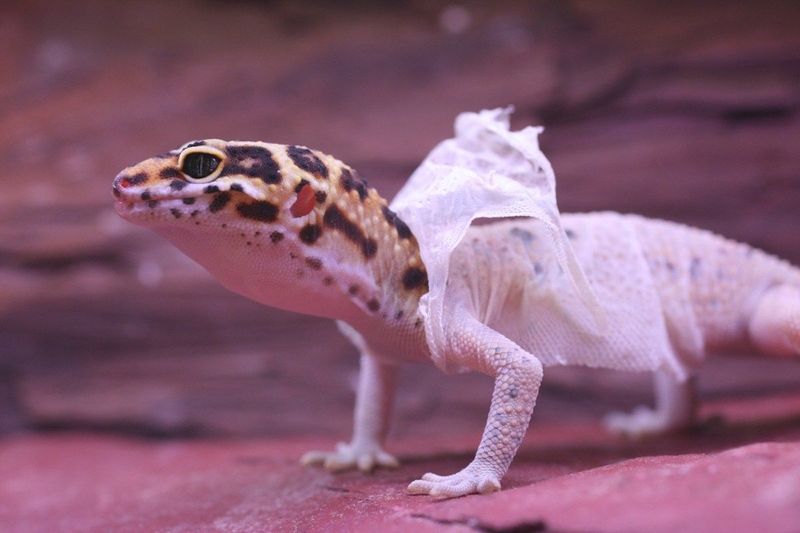
A popular pet reptile, the Leopard Gecko, undergoes regular skin shedding to accommodate growth and maintain skin health. Unlike many other reptiles, leopard geckos often consume their shed skin, a behavior that aids in nutrient recovery and reduces trace of their presence in the wild.
Shedding occurs every few weeks, more frequently in younger geckos. The process usually begins with the gecko loosening the old skin by rubbing against objects. Once loosened, the gecko methodically peels the skin away, often starting from the head and working towards the tail.
This regular shedding is crucial, as retained skin can cause health issues, particularly around the toes and eyes. By consuming the shed skin, leopard geckos recycle nutrients, a practical adaptation in their natural habitats.
7. Softshell Turtle
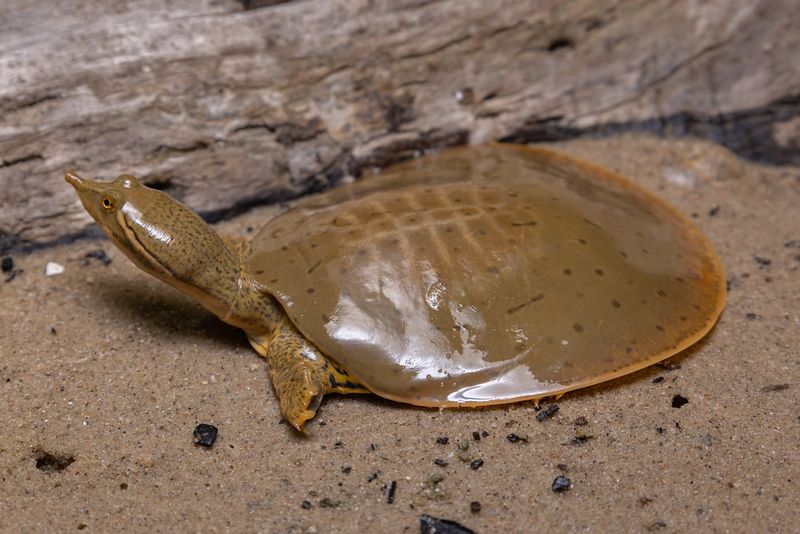
Softshell Turtles, known for their distinctive pancake-like appearance, shed their skin as part of their growth process. Unlike their hard-shelled relatives, softshell turtles have a leathery carapace that peels away in small sheets.
This shedding is a gradual process, often unnoticed due to the turtle’s aquatic lifestyle. As they swim, the friction with water helps slough off old skin. The environment plays a significant role in assisting this natural process, ensuring the turtle’s new skin is fresh and healthy.
Shedding is vital for these turtles as it allows them to grow and remove parasites that may inhabit the skin’s surface.
The new skin aids in better mobility and camouflage, essential for avoiding predators and thriving in their habitats.
8. Green Tree Python
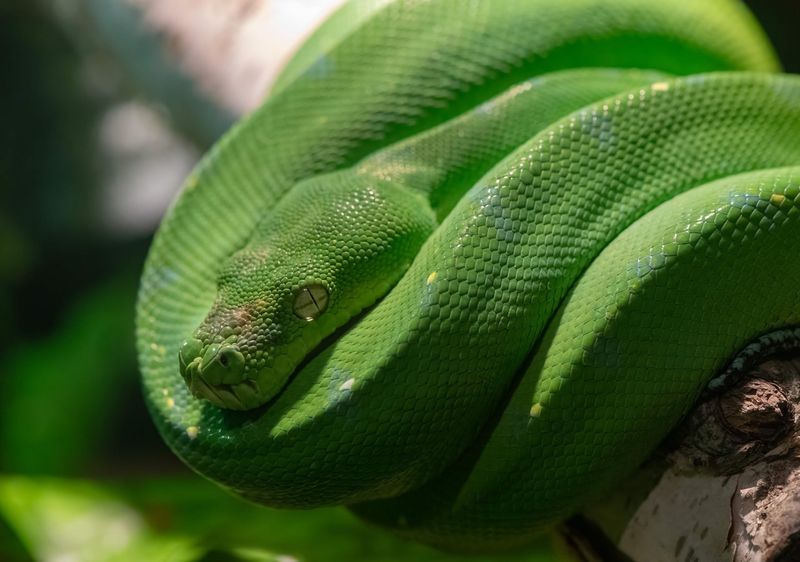
The Green Tree Python, renowned for its vibrant color and arboreal lifestyle, undergoes a fascinating shedding process similar to other snakes.
This process, essential for growth and health, involves the periodic shedding of their outer skin layer, known as ecdysis. Before shedding, the python’s skin becomes dull, and its eyes appear cloudy, indicating the start of the process.
This is a vulnerable period, as the python’s vision is impaired. To begin shedding, the python rubs its head against rough surfaces to loosen the old skin, then slithers out of it, leaving a complete, intact layer behind.
Post-shedding, the python’s colors are more vibrant, and its scales are smooth and shiny. This refreshed appearance aids in camouflage and protection.
The shedding process is not just about physical growth but also serves to remove parasites and heal injuries.
9. Blue Crayfish
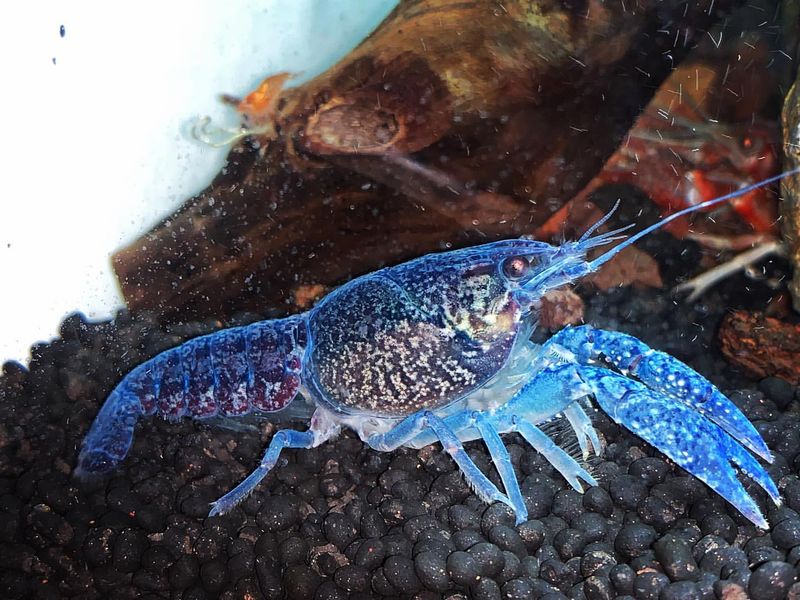
Blue Crayfish, notable for their striking hue, undergo molting to grow and regenerate. This process involves shedding their hard exoskeleton, which does not expand as they do.
Molting is a vulnerable phase in their life cycle, requiring caution and strategy. Before molting, crayfish absorb water to split their old shell, creating space to wriggle free.
This expansion is crucial, as it eases the shedding process. Once the exoskeleton cracks, the crayfish slowly pulls itself out, leaving the old shell behind.
Post-molt, the crayfish’s new exoskeleton is soft and delicate, making it susceptible to predators. During this time, crayfish often hide to allow their new shell to harden, ensuring safety and protection.
Molting is also essential for regenerating lost limbs, a remarkable ability that highlights their resilience. This complex process underscores the crayfish’s adaptability and the intricate dynamics of aquatic life.
10. Emperor Scorpion
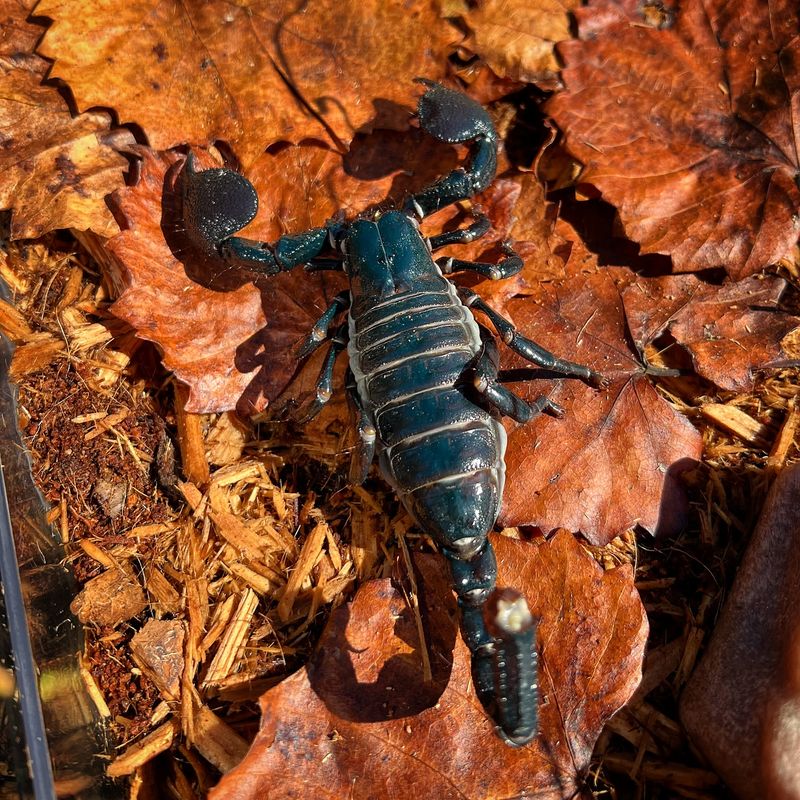
One of the largest scorpion species, the Emperor Scorpion, undergoes molting to grow, a critical phase in its development. Molting involves shedding the entire exoskeleton, allowing the scorpion to increase in size and renew its body.
Before molting begins, scorpions become inactive and reduce feeding as they prepare for this energy-intensive process. The exoskeleton splits, usually at the head, and the scorpion slowly emerges, leaving the old shell intact but empty.
The new exoskeleton is initially soft and pliable, necessitating a period of hiding to avoid predators and harden its armor. This process not only allows for growth but also replaces worn-out body parts, like pincers and stingers, with new ones.
11. Bearded Dragon
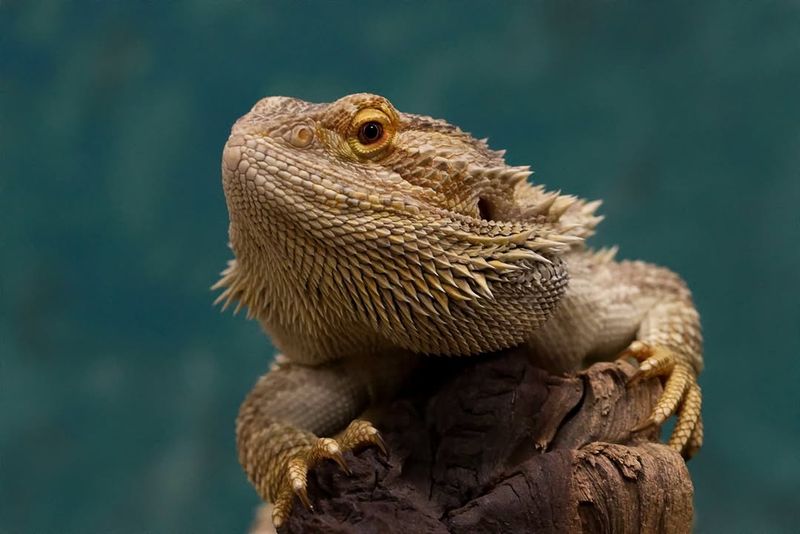
Bearded Dragons, popular pets and native to the Australian outback, undergo regular shedding to grow and maintain skin health. Unlike some reptiles, they shed their skin in patches rather than a single piece.
This shedding process is more frequent during the dragon’s juvenile stages, slowing as they reach maturity. The process begins with the skin becoming dull and dry, at which point the dragon will rub against objects to help peel away the old layers.
The new skin underneath is brighter and healthier, essential for protection against environmental challenges. Shedding also helps bearded dragons remove parasites and heal minor skin injuries.
For owners, it’s a crucial aspect of care, emphasizing the need for suitable habitat conditions to support this natural process.
12. Chinese Softshell Turtle
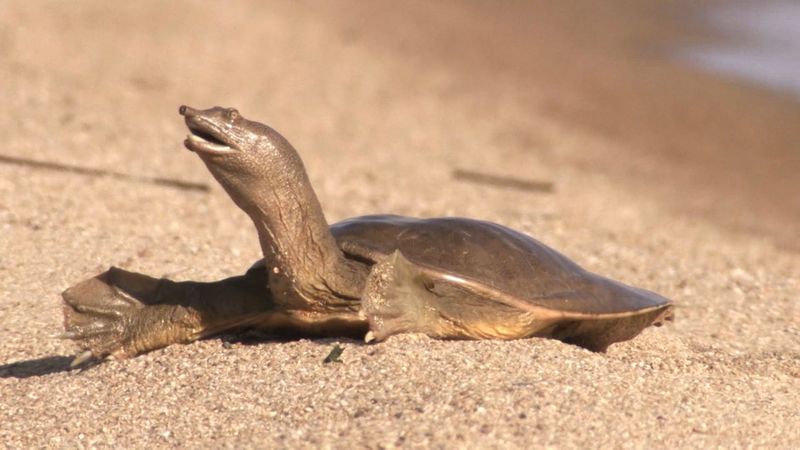
The Chinese Softshell Turtle, with its unique leathery shell, undergoes a shedding process that sets it apart from hard-shelled turtles. This process involves the gradual peeling away of the skin and shell layers.
Shedding is facilitated by the turtle’s aquatic environment, where water movement aids in removing old skin. This ongoing process is subtle yet essential, allowing the turtle to grow and maintain healthy skin.
The fresh skin underneath provides improved mobility and protection, crucial for escaping predators and adapting to environmental changes.
Shedding is a vital part of their life cycle, highlighting the turtle’s resilience and adaptability. This process is a fascinating example of nature’s ability to engineer creatures perfectly suited to their habitats, showcasing the diversity and intricacy of reptilian life.

